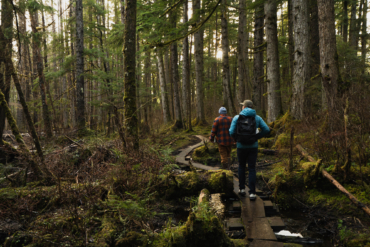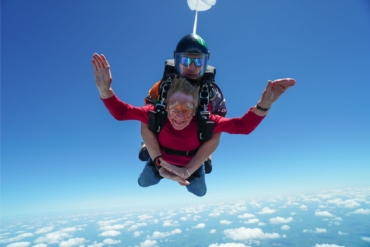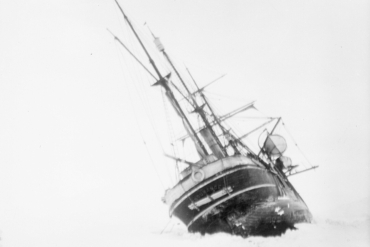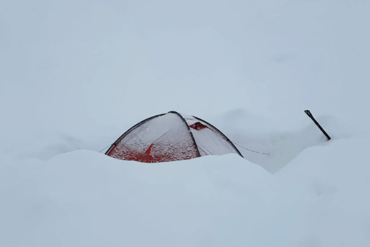By: T.C. Worley
The rushing white noise of the creek beside my tent was drowned by the thumping of an approaching helicopter. I unzipped the door just in time to see it settling into a furious cloud of dust. An hour later the video crew was on board and banking over distant mountain passes, filming racers on their way to distance checkpoints. There were several back and forth trips to carry photographers, race directors and film crew into the remote areas of the race. There are no easy outs anymore once you commit to the mountain section of the trekking route. A team that decides they cannot go on will either have to hike out anyway, or be rescued by a helicopter. This is wild land. A lot of wild land, actually. The Karukinka Conservation Area that we are in is about 300,000 hectars (or 750,000 acres) which is over 1,100 square miles. For now, Karukinka has limited accessibility, so save for a handful of people the area is occupied only by the racers, and crew.

Today the remaining teams reached checkpoint #8, at the base of the mountains. Up until today all teams were still in the race—no disqualifications, no dropping out. That all changed when Team Fast and Light from Great Britain rolled in. One of their team, Mark Childs was suffering a stomach illness and another member was beginning to feel ill as well. With Childs unable to keep anything in his stomach for the last 12 hours, their race was over. Teammate, Simon Fisher said “It’s a massive disappointment. It’s the right decision, but that doesn’t make it any easier.” Childs felt embarrassed having to quit, saying “I hate pulling out because of a tummy bug. If it weren’t so sad it’d be funny, really.” Fisher put it well when he muttered “Fast and Light became slow and puking.” The move, while disappointing shows the teams maturity. They’ll live to race again.

But high in the mountains whether feeling well or not, the remaining teams soldier on. After moving up and over four major mountain passes, a ropes course await them at checkpoint #9. Another logistical hiccup caused the teams harnesses and ropes to be delayed, meaning that once they arrive at the ropes, they will have to borrow the staff equipment and rapel one at a time down the cliff. Their feet touching down in “Valle Profundo” (translated “Profound Valley”) the teams will navigate their way across the infamous turba fields. Turba is a spongy plant that ranges from firm enough to stand on, to so soft that you sink to your waist. Until you step onto one, you cannot be sure which it will be. If you survive the turba fields you’ll have to thrust yourself into forests full of thorny bushes and descend a steep valley before arriving at checkpoint #10. A Tyrolean traverse (hand over hand across a rope) across the Rio Azopardo is bound to be refreshing experience. The ropes stretched just enough to cause the racers to dip into the water as they neared the midpoint.
Coming into Saturday, most teams will have passed through the stages mentioned above and will be well into the Darwin Range. Their trek will take them between snow capped peaks for several days. Team Helly Hansen maintains a solid lead in the race, but it is far too soon to talk of winners. Besides, as best I can tell, anyone who can finish this race is a champ. Weather has been almost perfect for fast racing so far, though conditions are likely to change as we continue south. Anything can happen at the end of the world.
For more images and race details visit:
Wenger Patagonian Expediton Race





